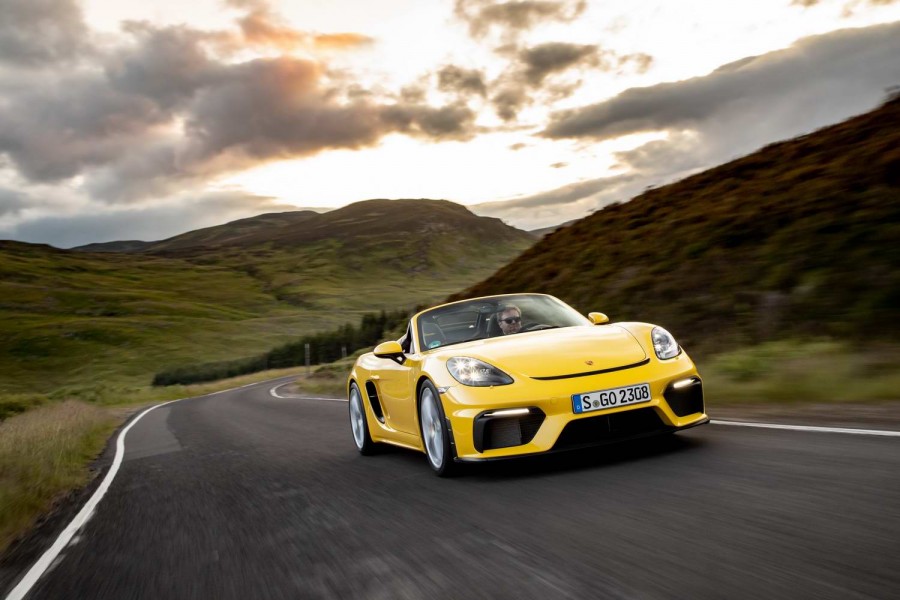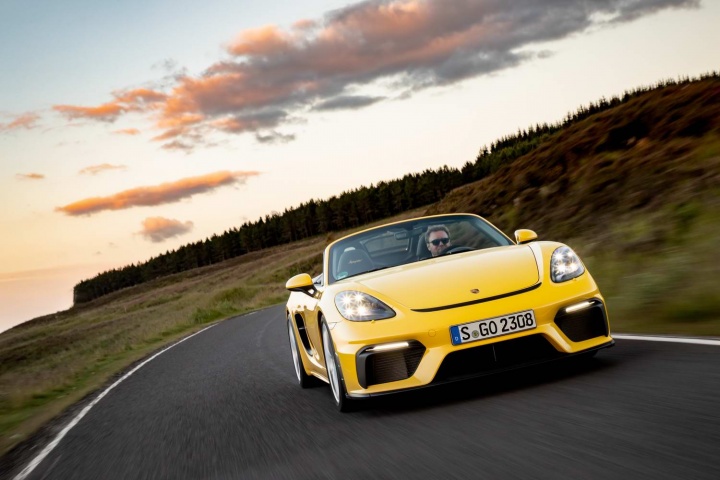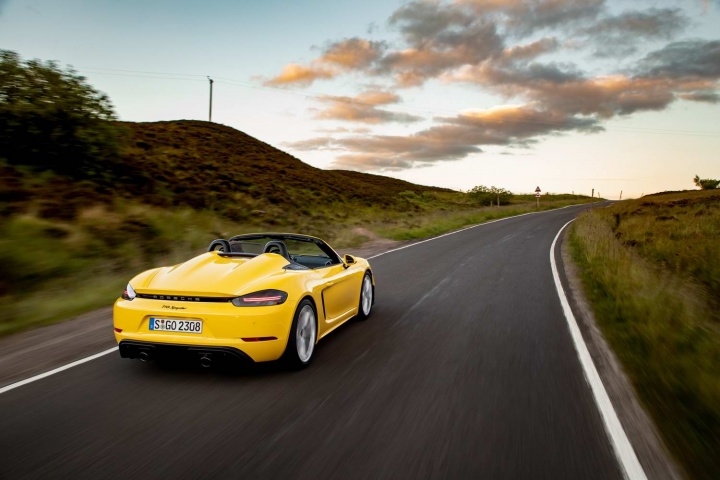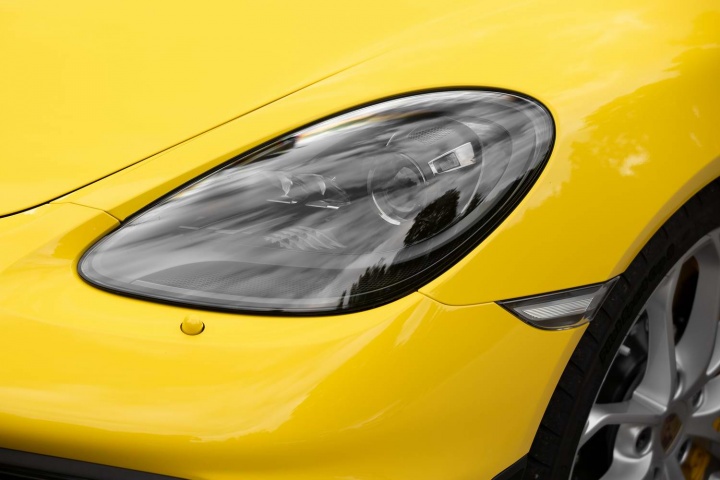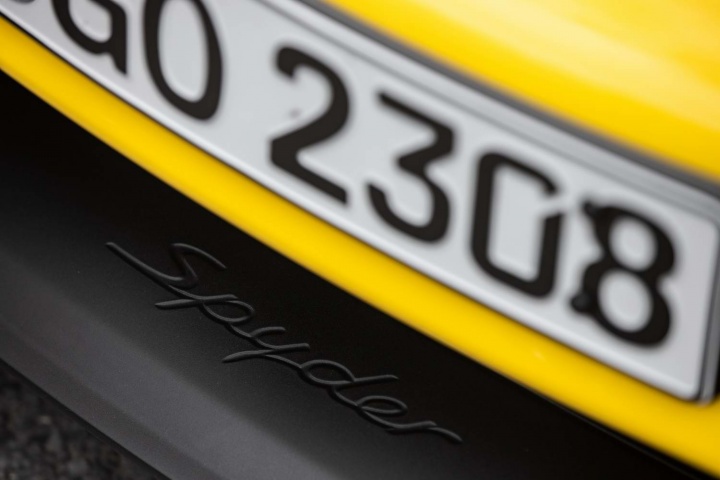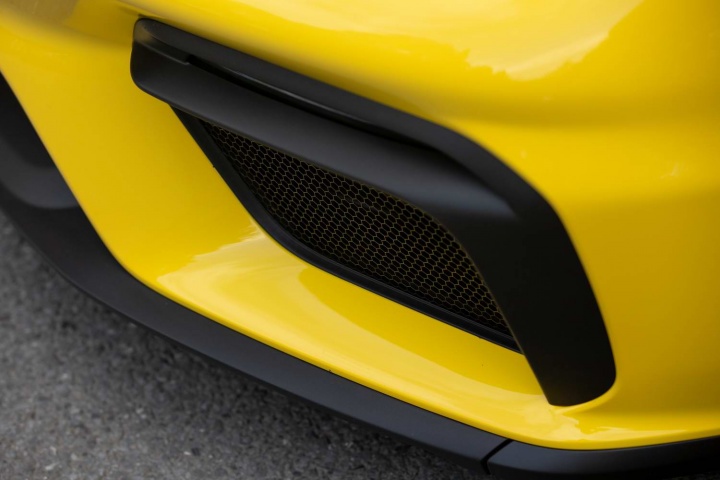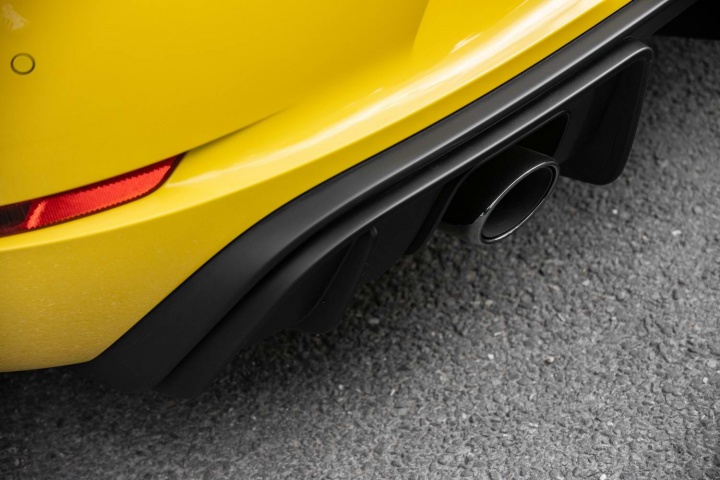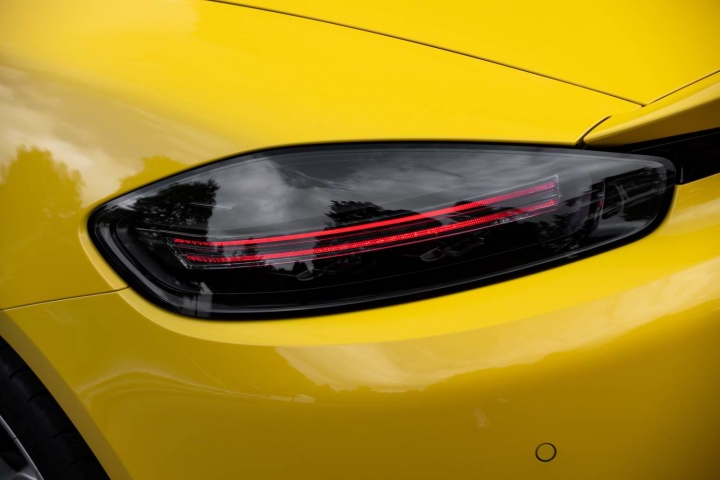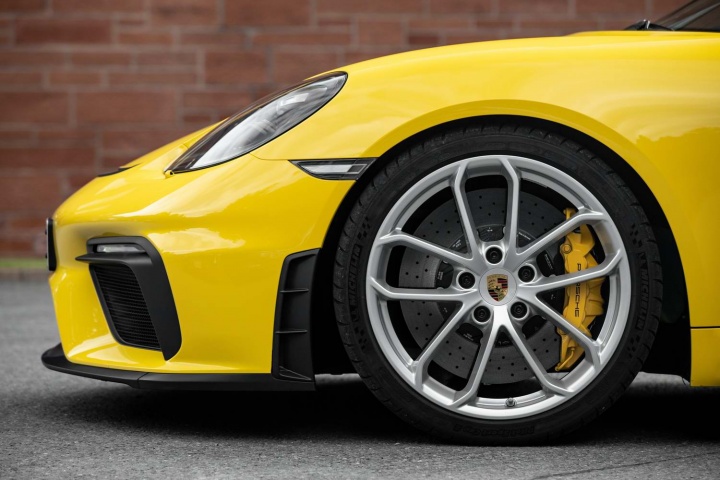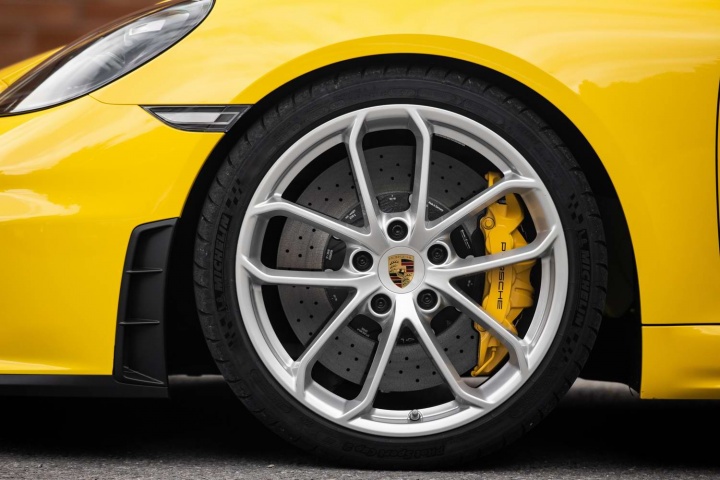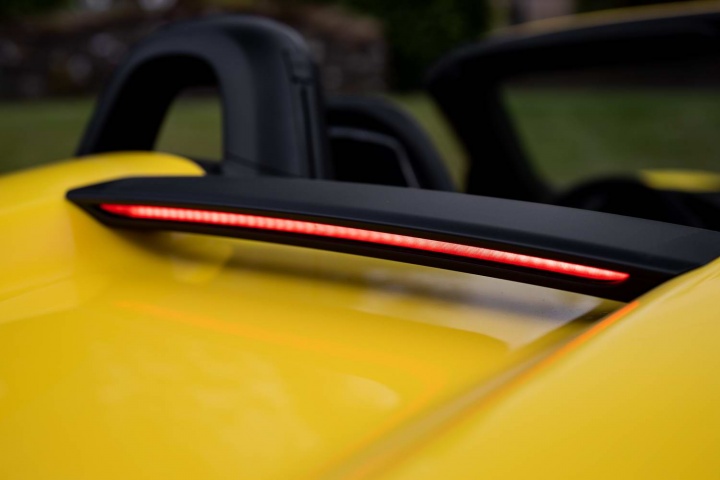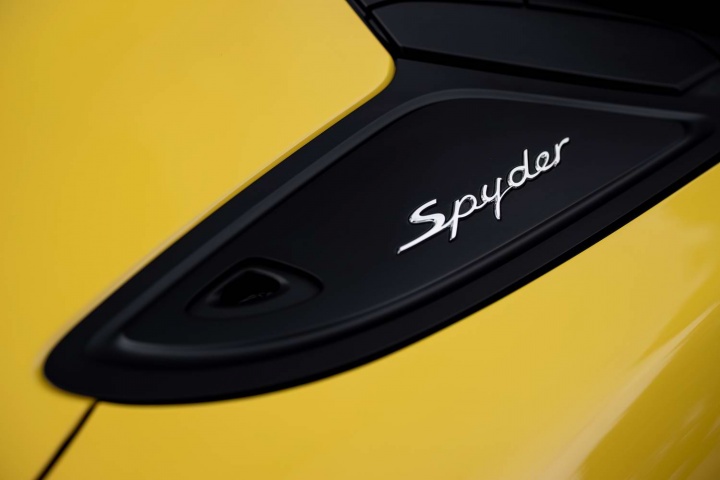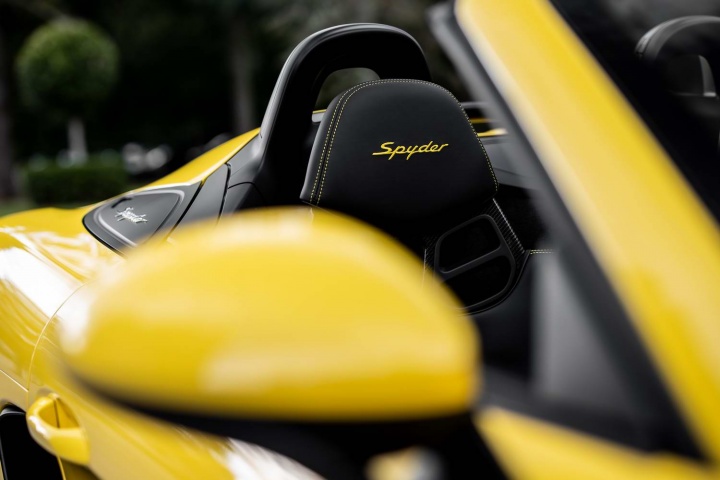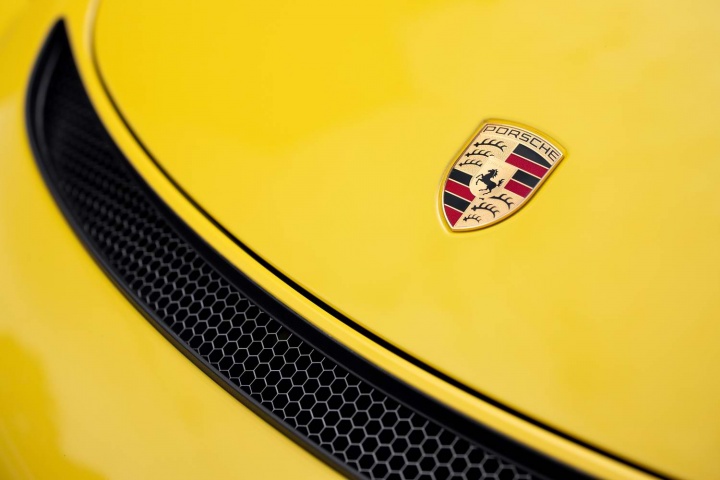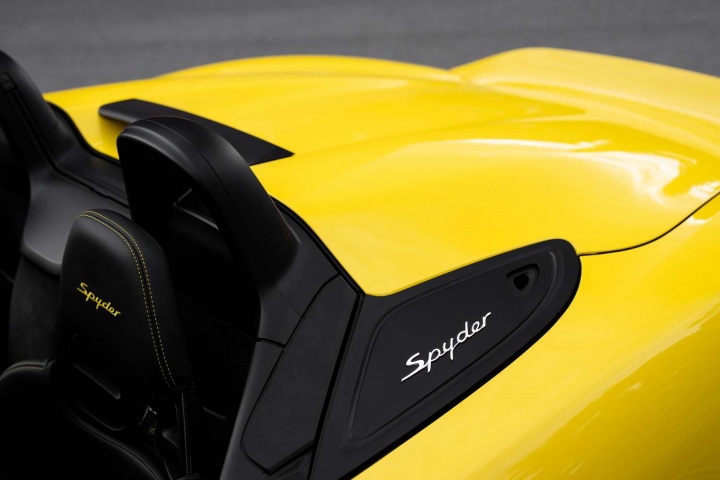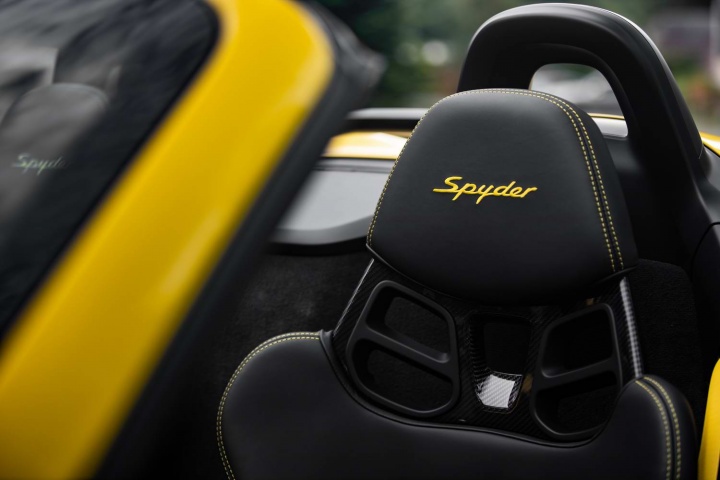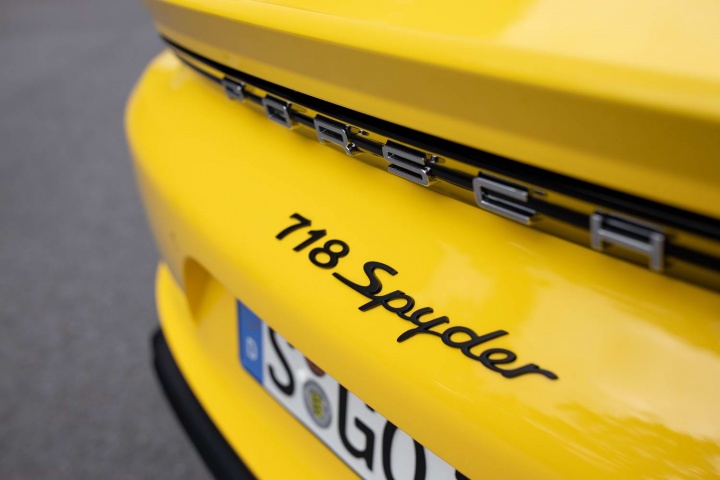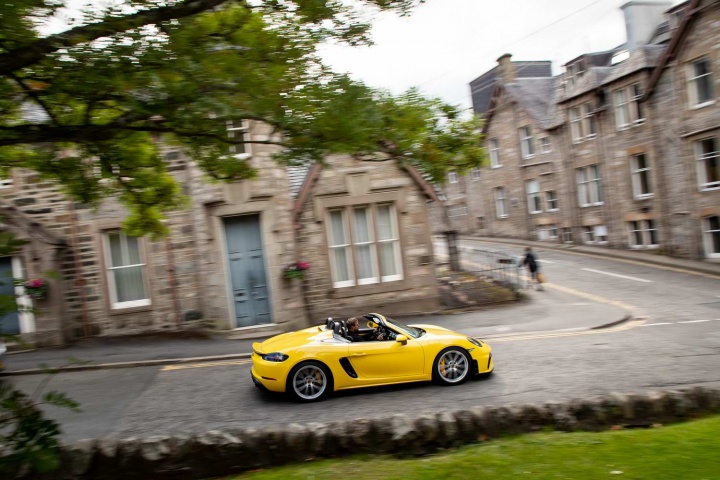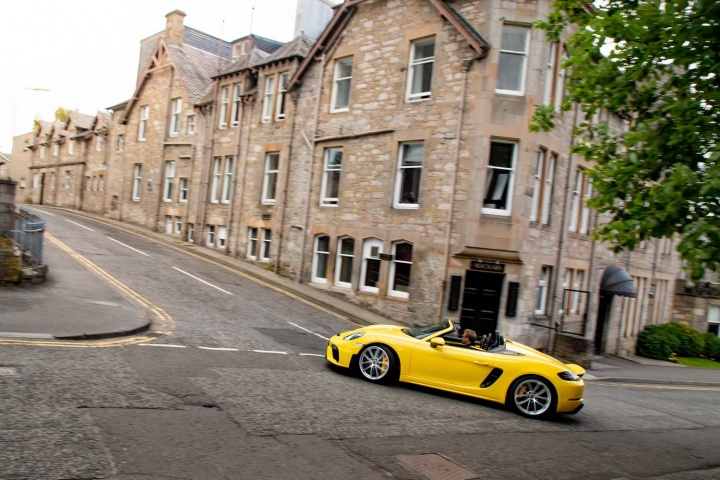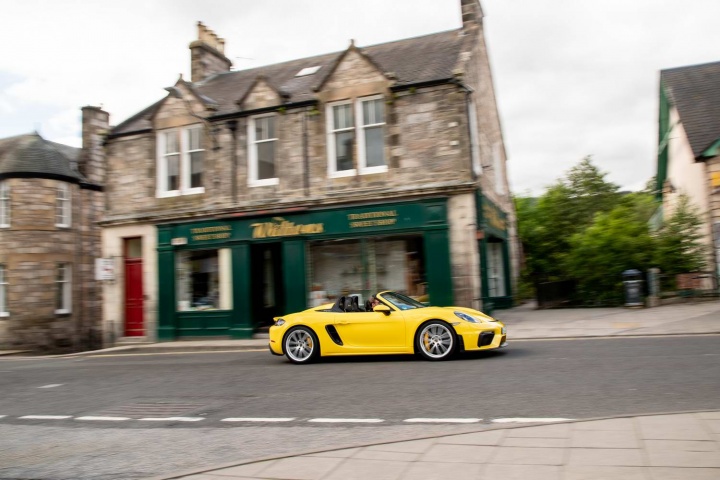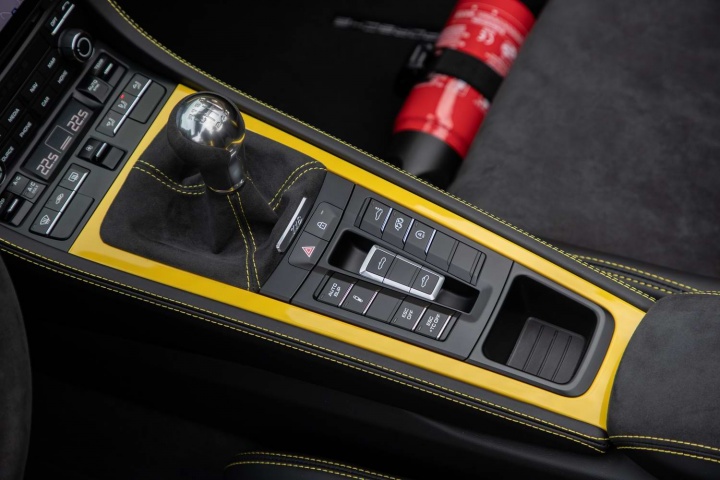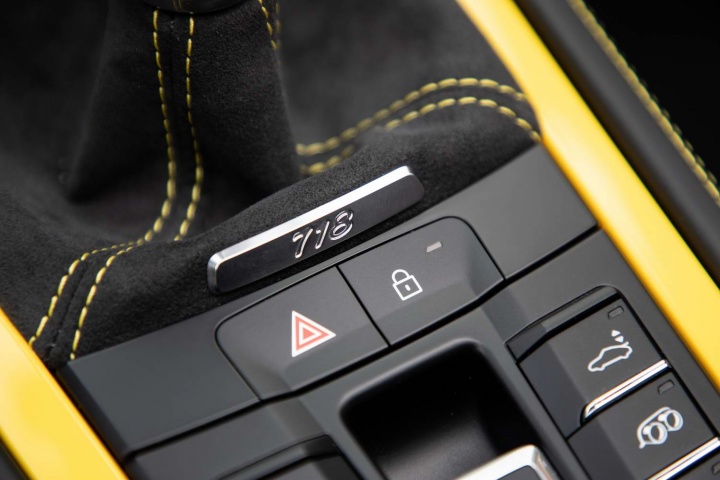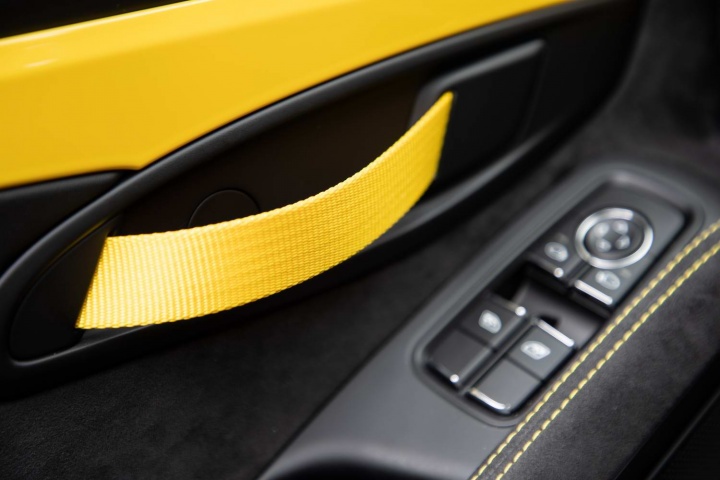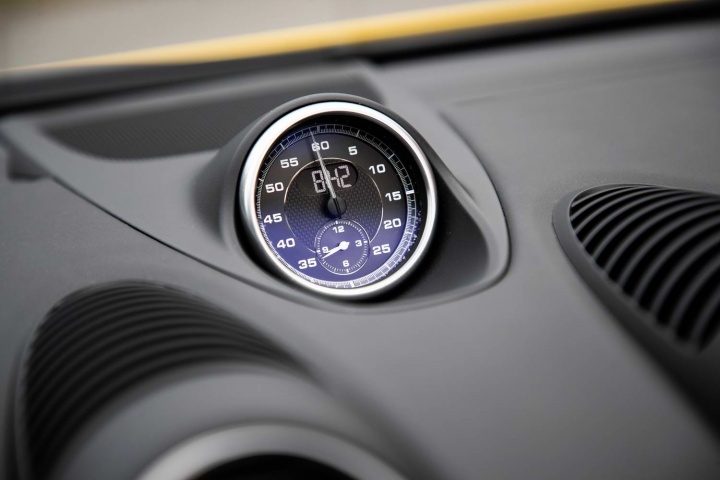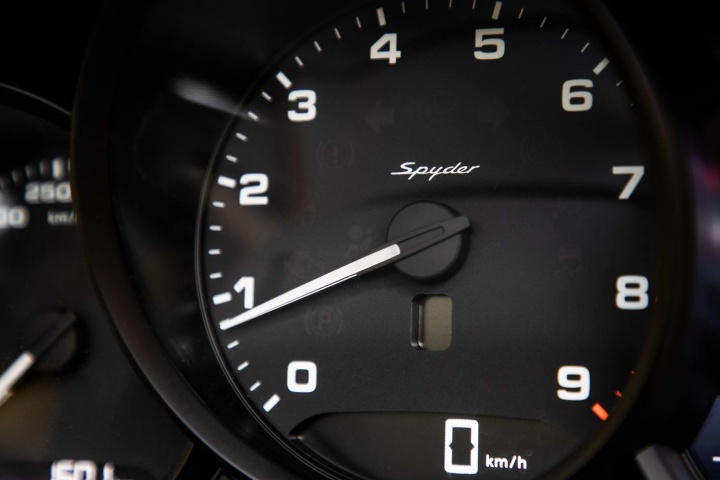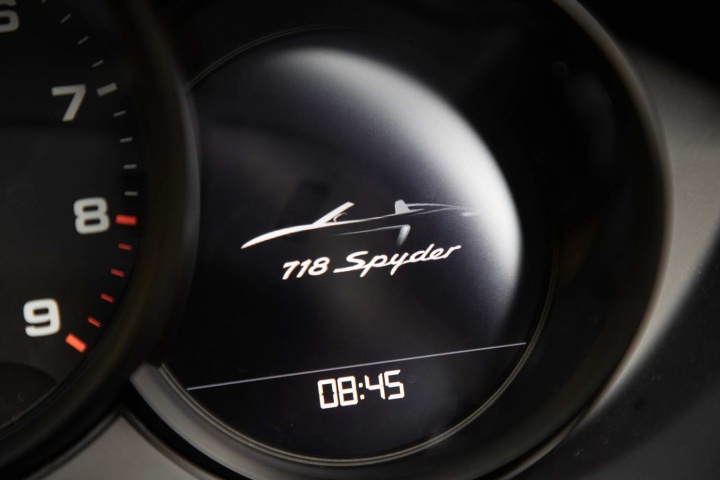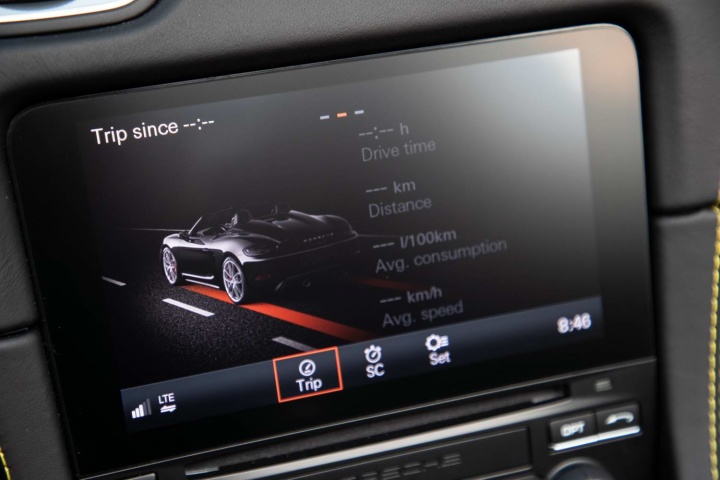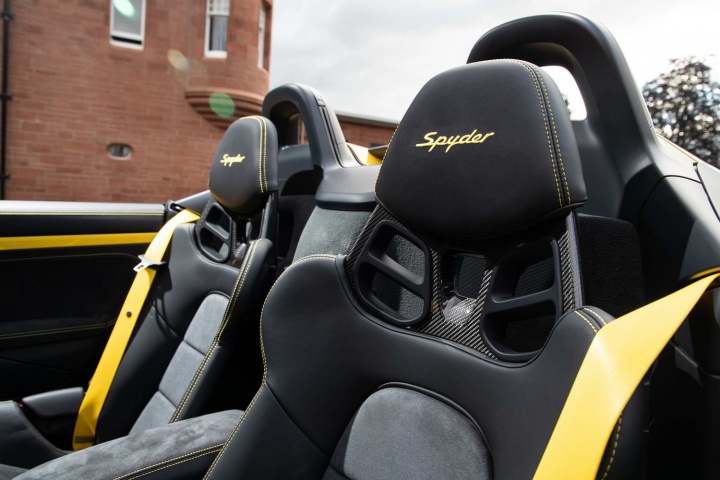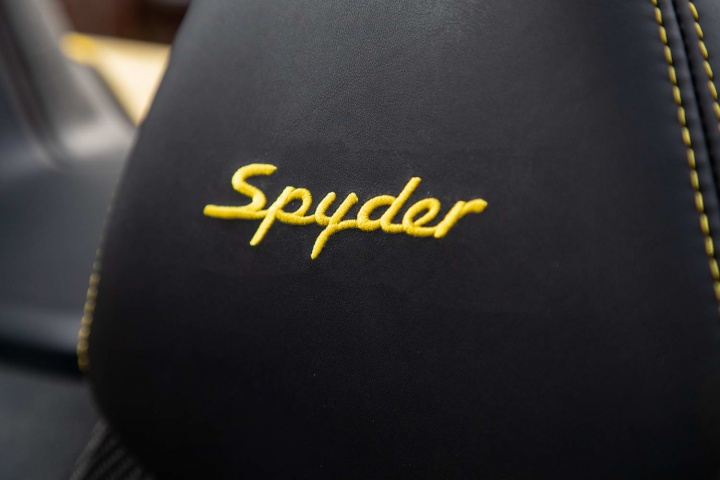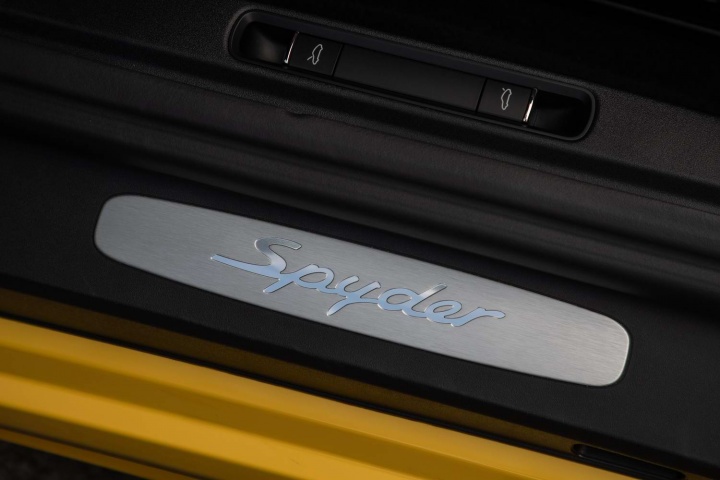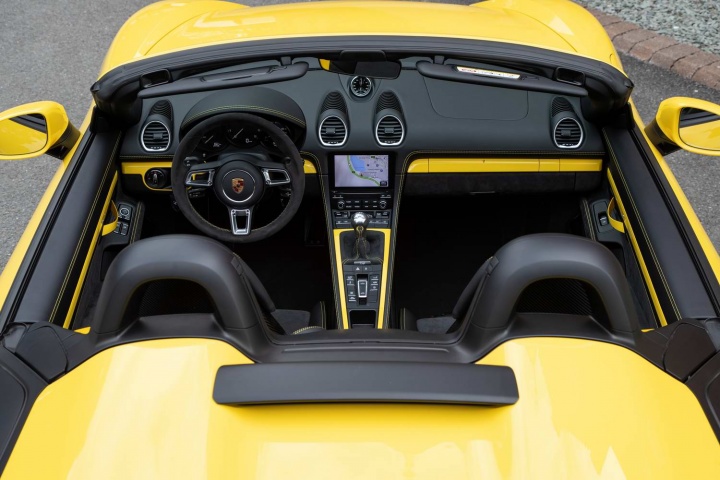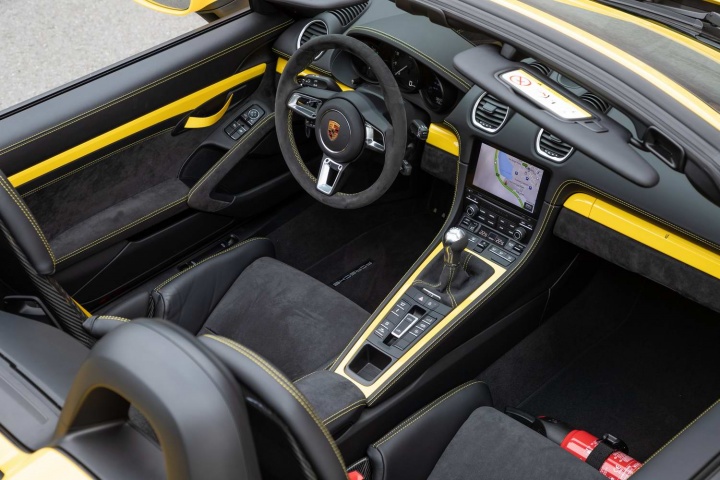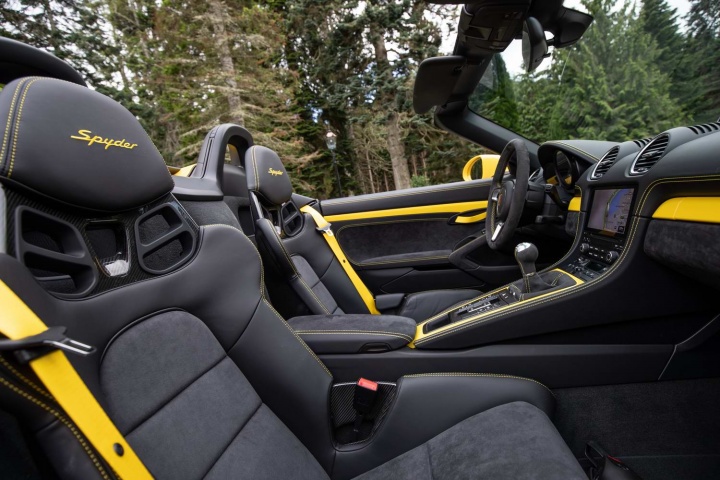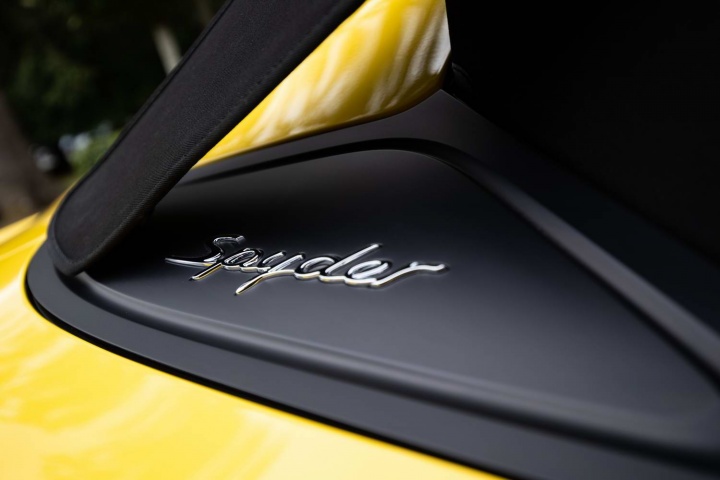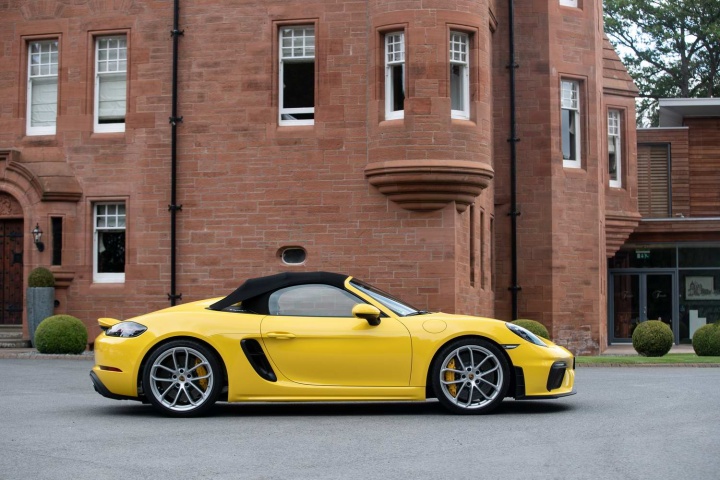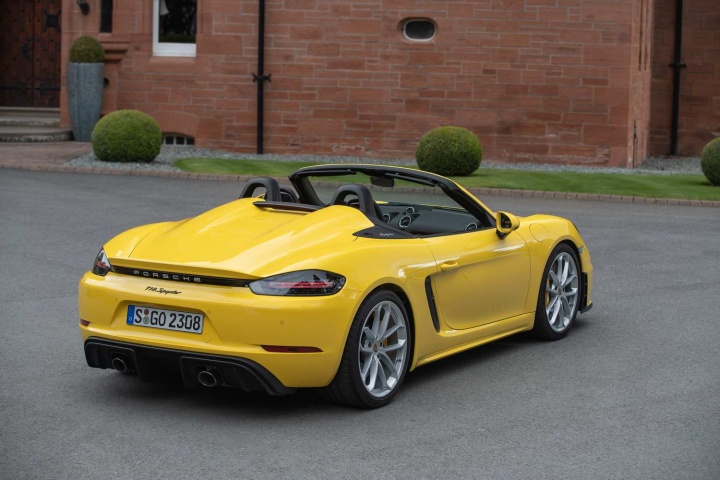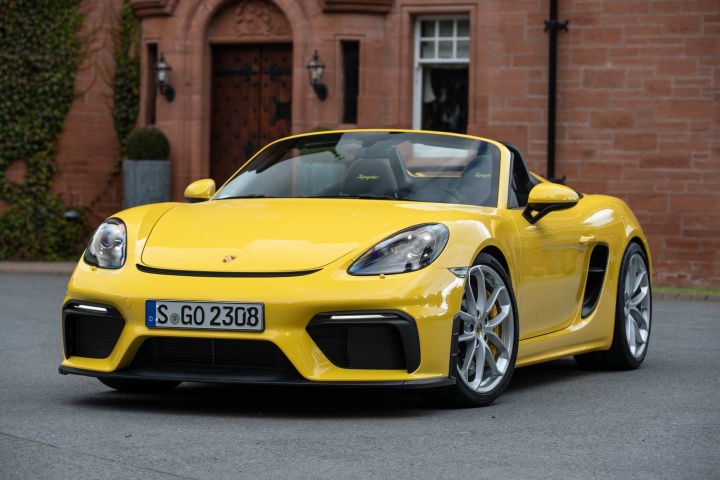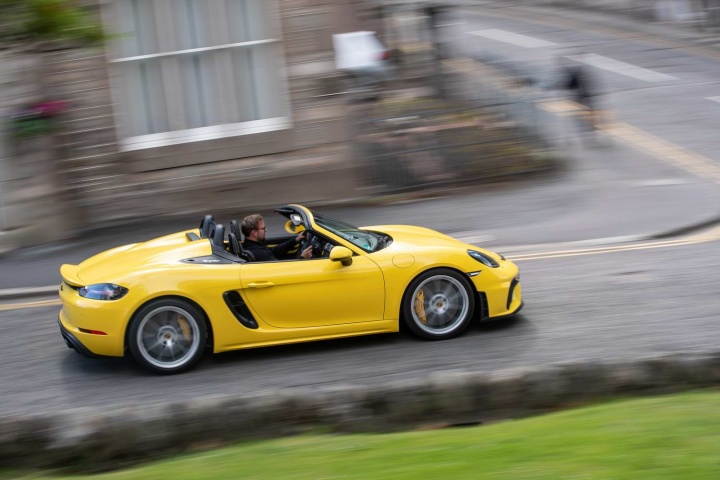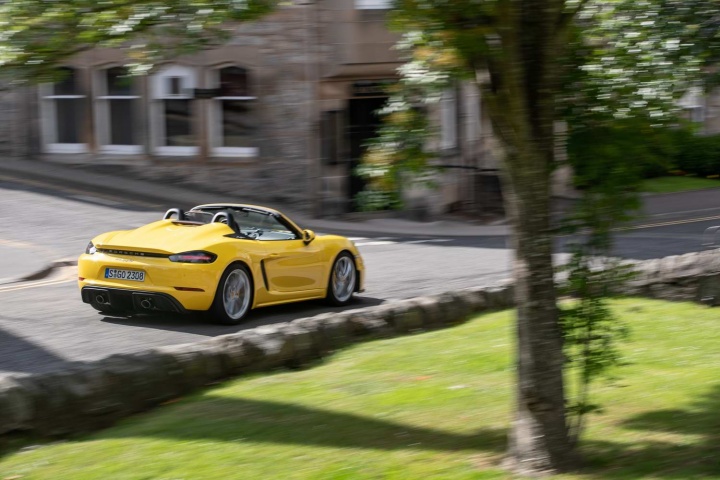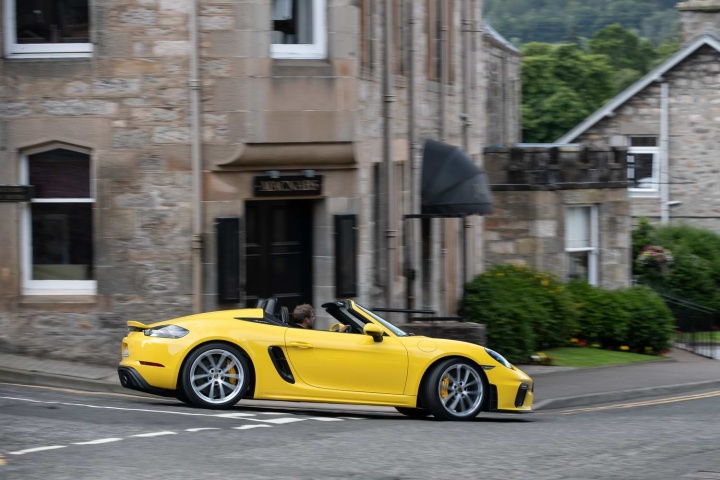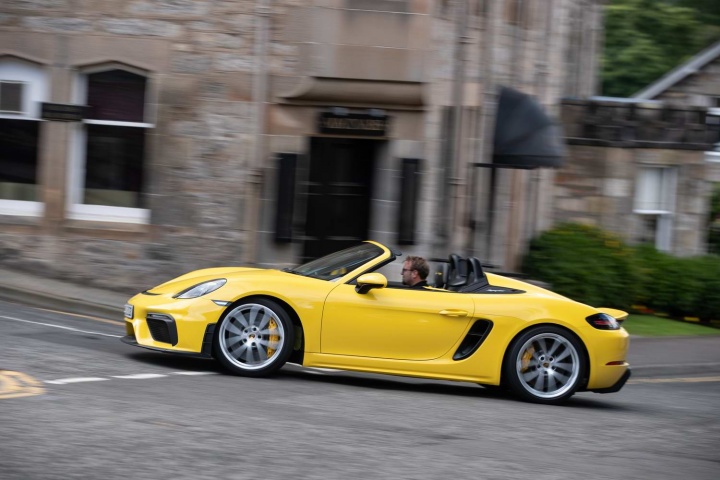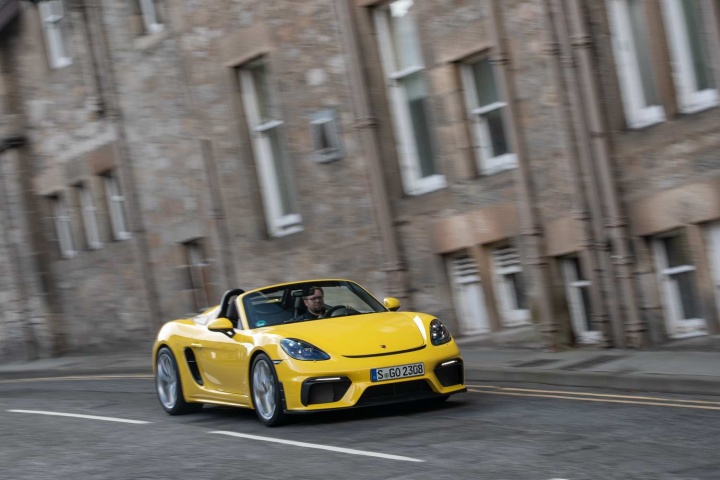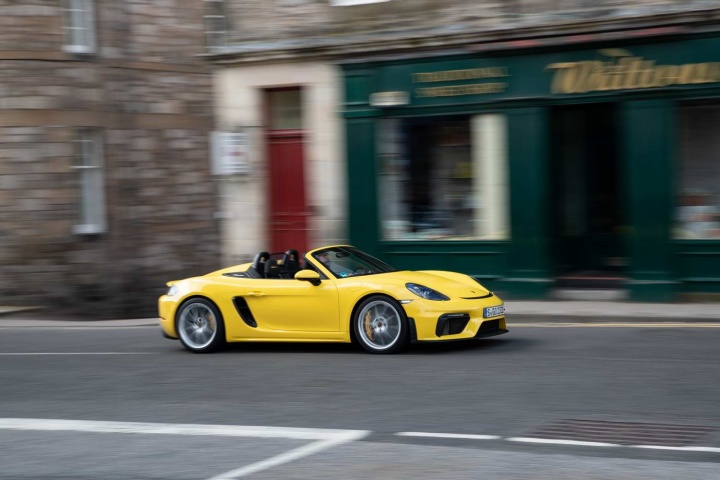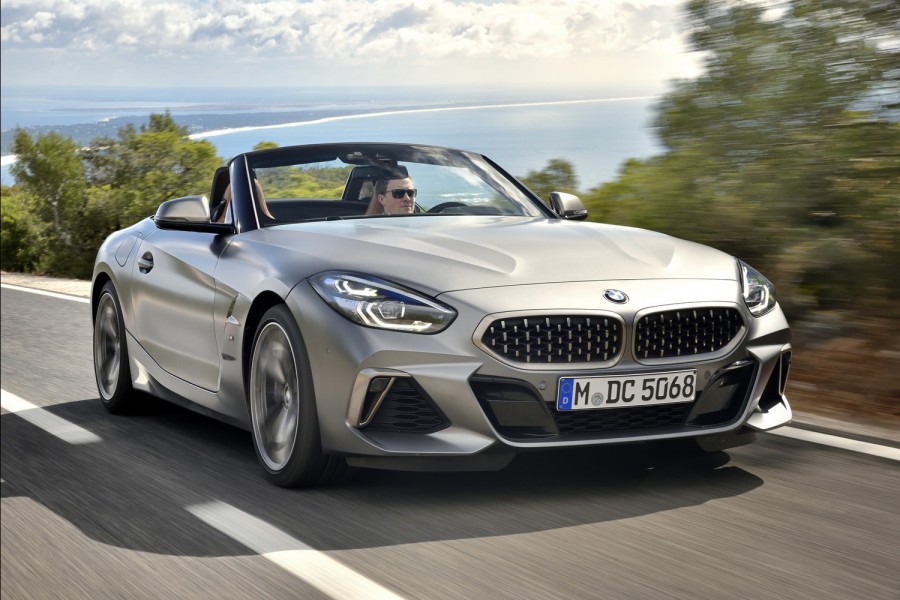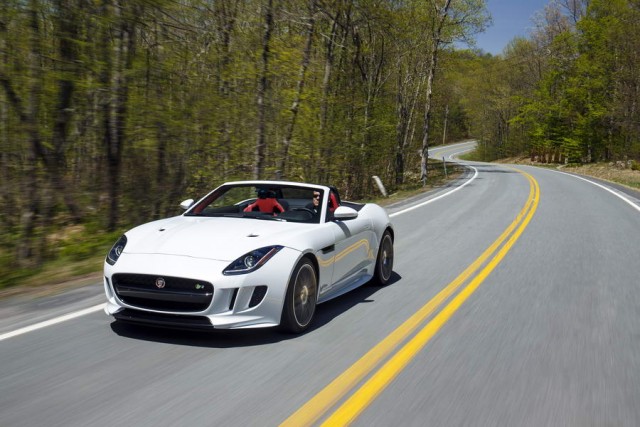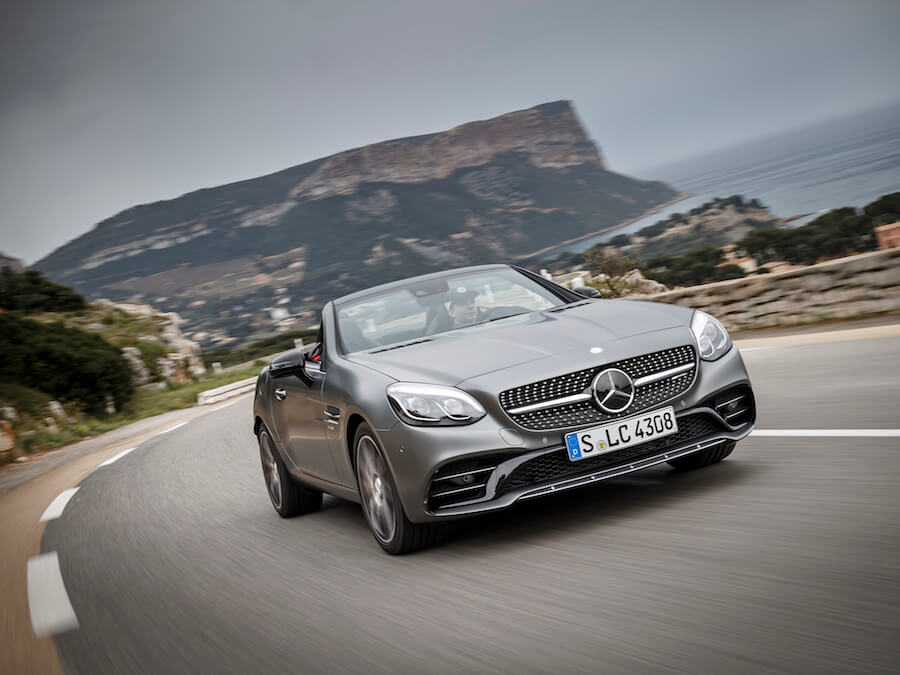As much fun as the original Porsche Boxster Spyder was, it was never as closely aligned to the Cayman GT4 as the brand new one is. They use the same glorious naturally aspirated flat-six engine, manual gearbox and a chassis designed to set your pants on fire (metaphorically speaking) and your synapses firing (actually). Could the new 718 Spyder be the best of the new twins?
In the metal
We're fans of the current Porsche 718 style, but it's been ramped up a notch for the Spyder with a restyled front end from the Porsche GT school of design. It looks great, but it's not all for your viewing pleasure (ok, the little embossed 'Spyder' script in the middle of the splitter is cool), as a huge amount of aerodynamic work was done in the wind tunnel to increase downforce without increasing drag. Apparently, the 718 Spyder is the first car in the Boxster family to generate actual downforce at the back (it gets an automatically deploying spoiler rather than the fixed wing of its Cayman GT4 sibling, but retains a fancy new diffuser design). Oh, and the 20-inch rims are fitted with ultra-high-performance tyres as standard. Nobody cares about any of that, we reckon, as it's all about the retro humps behind the seats, isn't it?
Anyone that has had to live with the original Boxster Spyder's fiddly roof will rejoice at how quick the new one is to remove, but conversely, anyone coming from a regular 718 Boxster will wonder how the hell it all works. Allegedly, with practise, it can be removed in 20 seconds, but I couldn't do it in double that. Apparently, it can withstand a car wash and the car's 301km/h top speed...
The rest of the cabin is gently tweaked, including a simply round Alcantara-clad steering wheel with a slender rim, door pulls instead of handles, lovely leather/Alcantara sports seats and plenty of 'Spyder' logos. The Chrono Package with dash-top stopwatch is standard, as is Porsche's touchscreen infotainment system.
Driving it
Glorious. Glorious. Glorious. Life for someone who loves to drive doesn't get much better than an open and empty country road in front of them with plenty of challenging corners and the keys to the Porsche 718 Spyder in their hand. The new 4.0-litre flat-six petrol engine is a major part of this car's appeal, but the chassis is just as special.
That naturally aspirated engine is actually a new development, based on the twin-turbocharged 3.0-litre six found hanging out the back of the current-generation Porsche 911 - though without the turbos, obviously. It would be a disservice to Porsche's engineers to say it was as simple as that, but the end result is a very special engine indeed. Its peak figures of 420hp and 420Nm of torque are less important than how they are delivered. Produced high up the rev range (giving you plenty of reason to explore the upper reaches of the rev counter whenever possible), you'd expect that this engine might feel a bit flat elsewhere, but it really doesn't, making the car feel rapid and responsive even when you're just ambling about in a higher gear.
Ah, speaking of which, the six-speed manual gearbox (apparently a PDK automatic will be offered as an option in time) is both tear-inducingly sublime and excruciatingly frustrating at the same time. Don't get me wrong; the shift action of the lever is just perfect (well it is once you get used to how little you need to move it), while the pedal spacing and weighting are ideal for heel-and-toe changes. However, it's very high-geared, so this car will do an indicated 135km/h in second gear. The problem? That robs you of the pleasure of changing gear regularly on the public road when there's just no need to. And you will want to. We love the fact that, while the Spyder comes with an automatic throttle-blip function on down-changes, a quick press of a prominent button on the centre console turns the system off so you can try and do it yourself.
That shows Porsche expects people to relish driving this car. There's a lot more besides to emphasise that point. Porsche Active Suspension Management (PASM - selectable two-stage damping) is standard, bringing with it a 30mm lower ride height for a lower centre of gravity. The suspension is best described as firm and controlled, even in the 'softest' setting. Porsche Torque Vectoring (PTV) and a mechanical limited slip differential work together to aid agility and turn-in during fast cornering, while Porsche Active Drivetrain Mounts (PADM - Porsche loves a good acronym, doesn't it?) firm up or soften off the mounting of the transmission depending on conditions to balance stability, directness and comfort. PCCB (Porsche Ceramic Composite Brakes) are optional, but the standard steel setup is exceptional, so we'd not advocate upgrading.
The end result is a car that is truly special to drive, with quick and communicative steering, immediate reactions and huge reserves of grip and traction into, through and out of a corner. It marries elevated competence with genuine involvement, all the while accompanied by a distinctive six-cylinder wail from behind and the rush of air over your head. What's not to love?
What you get for your money
Sorry to burst the bubble, but this is where the conversation gets difficult, as the Spyder is considerably more expensive than the next model down the range, the 718 Boxster GTS, which is an exceptional car in its own right. Don't get me wrong; I think the Spyder is worth every cent, but viewed in the cold light of day, many will wonder if it would be better value to add a few choice options to a Boxster instead. Shame the six-cylinder engine and GT chassis aren't on the options list, eh?
Summary
Presented with the enviable choice of 718 Spyder or Cayman GT4, I'd struggle. The Irish climate doesn't suit open cars, but then again, the open-air experience gives the Spyder unique appeal and this is hardly a car to be used every day. Also, it looks fantastic, more like a supercar than part of Porsche's entry-level sports car range. If you can live with the silly roof, and you're not a trackday regular, we'd suggest that the 718 Spyder could be the choice of the two new models.

